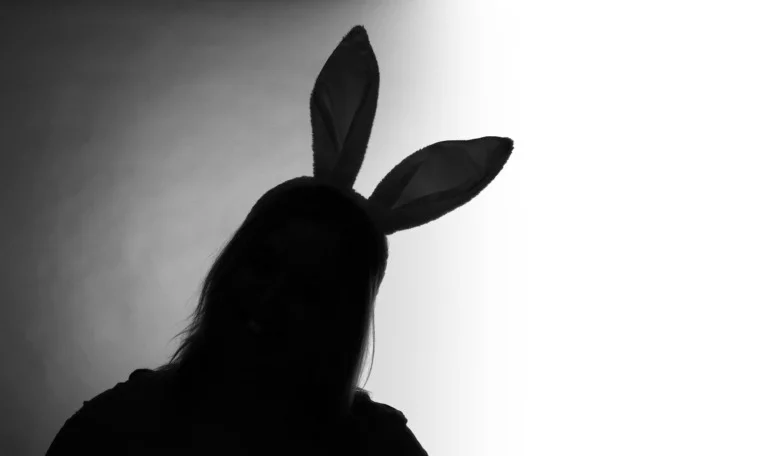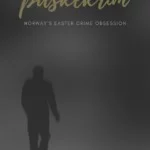It's a mystery! Or is it? This is the bizarre story of how and why crime fiction took over the Norwegian easter holiday.
When you think of Easter, what comes to mind? Chocolate eggs, daffodils, perhaps a roast lamb dinner with the family? In Norway, one of the most beloved Easter traditions is a little more sinister.

Every spring, as the days grow lighter and Norwegians head to their cabins or settle in for a quiet holiday at home, the country turns en masse to crime fiction.
Known as påskekrim—literally “Easter crime”—this seasonal fascination with murder mysteries is unlike anything seen elsewhere in the world.
Whether in the form of novels, television dramas, true crime podcasts, or short story anthologies, crime fiction dominates the Easter holiday in Norway.
Walk into a bookshop in March and you’ll likely find a towering display of the latest thrillers, all labelled with a bright yellow påskekrim banner. It’s a curious Easter tradition that’s puzzled outsiders and charmed international media alike. So, where did it all begin?
Table of Contents
The Curious Origins of ‘Påskekrim'
At first glance, påskekrim might seem like a clever modern marketing gimmick. In fact, its roots stretch back more than a century.
The story begins in 1923, when two young Norwegian writers, Nordahl Grieg and Nils Lie, published a crime novel called Bergenstoget plyndret i natt! (“The Bergen Train Was Robbed Last Night!”).
Their publisher, Gyldendal, orchestrated a bold publicity stunt by placing a front-page advertisement in the newspaper Aftenposten that mimicked a real news headline about the “robbery” on the famous Oslo to Bergen railway.
The tactic worked. Readers mistook the fictional heist for an actual event, prompting widespread attention. The book became an instant bestseller, and the idea of combining crime stories with Easter reading caught on.

Over time, this quirky publishing experiment evolved into a full-blown national tradition.
According to Gyldendal’s Bjarne Buset, the extended Norwegian Easter holiday plays a key role in making påskekrim possible. “Few other countries have as many days off during Easter as Norway,” he told Visit Norway. “The length of our holiday means that we have time to read.”
Norwegians often head to mountain cabins for the Easter holiday, where the days are filled with skiing, cosy meals, and quiet evenings by the fire. In this environment, a gripping mystery novel becomes the perfect companion.
A Nation of Armchair Detectives
Fast-forward to the present day, and påskekrim has expanded far beyond the printed page. While books are still at its core, the tradition now encompasses television, film, audio, and streaming platforms.
Major Norwegian broadcasters like NRK and TV2 schedule line-ups filled with mystery and detective dramas during Holy Week.
British series are especially popular, with past seasons featuring Vera, The Bay, Grace, McDonald & Dodds, and Bloodlands. Nordic noir also has a strong presence, from Danish series like The Bridge to homegrown productions such as Wisting.
Crime-focused podcasts spike in popularity around Easter too. While many are available year-round, some are repackaged or promoted specifically for the holiday.
One standout is Death in Ice Valley, a collaboration between the BBC and NRK that digs into one of Norway’s greatest unsolved mysteries.
For those with a preference for print, Norwegian publishers continue to produce special Easter-themed anthologies. One of the most consistent is the påskekrim short story collection from Strawberry Publishing, featuring new work by top authors like Jørn Lier Horst, Unni Lindell, and Tom Egeland.
Crime on a Carton
One of the quirkiest signs that Easter is approaching in Norway appears not in bookshops or on TV, but in the fridge. Norwegian dairy brands take part in the påskekrim tradition by printing short crime stories directly onto milk cartons.
These mini mysteries are designed to be read at the breakfast table, often unfolding in bite-sized episodes over several panels, with a riddle or clue at the end. They're especially popular with children and families, turning an ordinary morning routine into a fun whodunnit.

It’s a perfect example of how påskekrim has seeped into everyday life. In Norway, even your glass of milk might come with a side of murder.
Celebrating Crime (Fiction) in Oslo
To mark the growing importance of crime fiction in Norwegian culture, Oslo hosts the annual Krimfestivalen, a literary festival dedicated to the genre.
It typically takes place in March, just ahead of the Easter break, and draws a mix of domestic and international authors.
Past editions have welcomed bestselling writers such as Val McDermid, Jo Nesbø, Harlan Coben, and Lars Kepler. The festival features readings, interviews, panel discussions, and even murder mystery role-play events.
It’s a celebration of crime fiction in all its forms, and a great way to get into the Easter spirit, Norwegian style.
Not in Norway? No Problem!
You don’t need to be in Norway to enjoy a bit of påskekrim. Many of Norway’s top crime writers have been translated into English, making it easy for international readers to take part in the tradition.
For fans of classic whodunnits, try 1222 by Anne Holt, which begins with a train stranded in the snow, on the Bergen line, naturally. Jørn Lier Horst’s Dregs is a great starting point for his William Wisting series, offering a darker, more procedural style.
Then there’s Karin Fossum, often called “the Norwegian queen of crime,” whose Inspector Sejer novels delve deeply into the psychological side of crime and justice.
If you’re learning Norwegian, consider the Detektivbyrå nr. 2 series by Jørn Lier Horst. These shorter mysteries for children are written in simpler language but retain the intrigue of full-length thrillers.
And for screen entertainment, Scandinavian crime dramas are widely available on international streaming platforms. Try Wisting, Occupied, or the Swedish-Danish juggernaut The Bridge to get a sense of the genre’s tone.
Why Crime at Easter?
The link between crime stories and the Easter holiday may still seem odd to outsiders. After all, Easter is a time of rebirth, spring sunshine, and (for the religious) solemn reflection.
But perhaps that’s exactly the point. Norway’s long Easter break is often spent in remote mountain cabins, with snow still on the ground and not much to do once the sun sets. What better time to get lost in a good murder mystery?
The contrast between the dark subject matter and the peaceful setting is part of the appeal. Like so many cultural quirks in Norway, påskekrim thrives in part because it suits the national rhythm: unhurried, reflective, and grounded in an appreciation for a good story.
What påskekrim titles are you reading or watching this year? Let me know down in the comments.



Magical Norway! Even at home, my family is debating where that love of Norway comes from. My own mother(a pianist nurse!) has now a home in the woods(good neighborhood!)of Oslo, near the Swedish borders! Daddy bought the property for her! She even signed her birth name!” Daddy says that Mummy has Vikings blood in her!”Responsible,independent& loaded! She always says” utrolig Norge! Daddy(a Prof. Surgeon!) is more of a sunny country, golfing guy! Weekends are enough for him to stay in Norway but not Mummy! after 39 years of marriage!”We just hope that Norway will solve this problem!:)Bless NORWAY!
Interesting- and great reading (and tv series) tips
Thank you!
Very interesting. I had ever heard of this tradition. My grandparents loved to U.S. then moved on two Canada, but I’ve always been interested in everything Norway